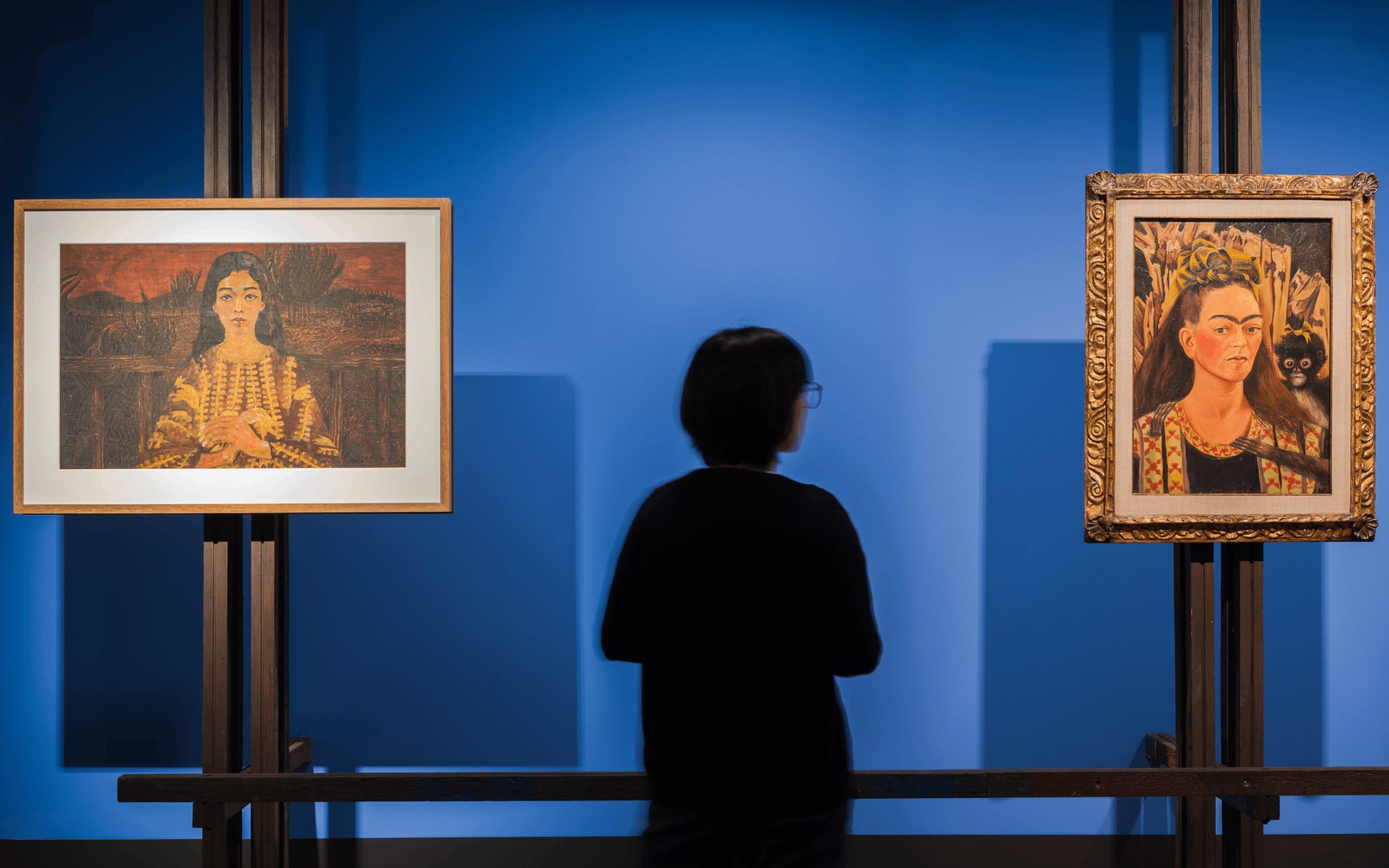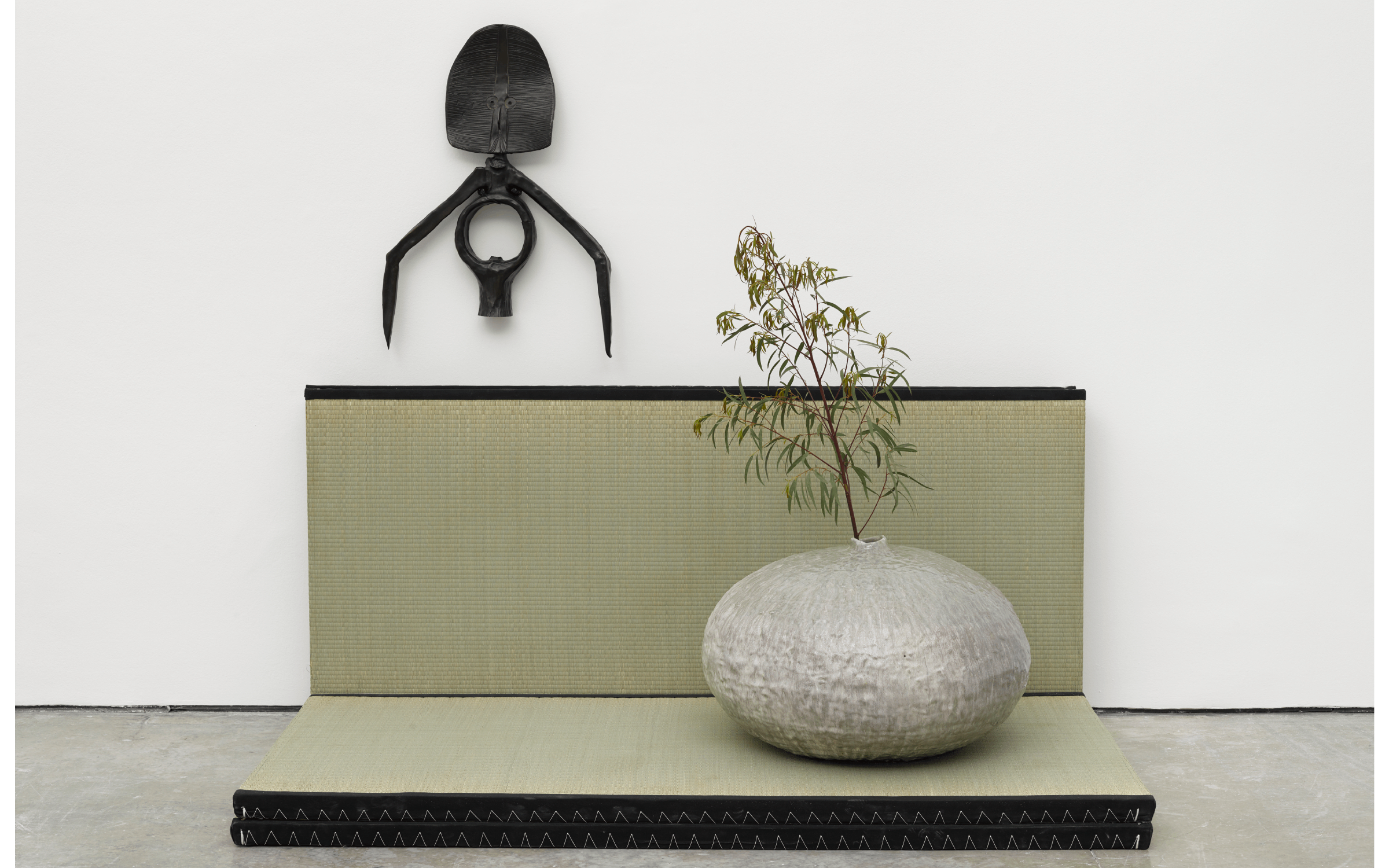There has been an increasing focus on South-to-South artistic exchanges in recent years, through exhibitions, biennials, research projects, and community platforms around the world. That current has finally reached Singapore, as two major exhibitions exploring cultural and diasporic connections across geographies signal a moment for South-South discourse in the city.
The first is the National Gallery Singapore’s blockbuster show ‘Tropical: Stories from Southeast Asia and Latin America’. Billed as the first major comparative survey of art from the two regions, over 200 works chart affinities between Latin American and Southeast Asian artists from the 19th century to the present, including Emiria Sunassa, Tarsila do Amaral, and David Medalla. The second exhibition is ‘Translations: Afro-Asian Poetics’, opening in January across several venues in Gillman Barracks and organized by The Institutum, a non-profit organization aiming to connect Southeast Asian art to the world. Curated by Dr. Zoé Whitley, Director of Chisenhale Gallery in London, who was assisted by Singapore-based curator Clara Che Wei Peh, ‘Translations’ tracks cultural and artistic resonances between African and Asian diasporas through some 100 works drawn from private collections across Asia, as well as new commissions, by artists including Do Ho Suh, Haegue Yang, Nick Cave, and Apichatpong Weerasethakul.
For the National Gallery Singapore, which holds the world’s largest collection of Southeast Asian art, ‘Tropical’ is the latest project reflecting the institution’s ambition to chart the contributions of Southeast Asia to Modern and contemporary art history. Not by simply plugging these contributions into Western-centric narratives but by aligning them to movements from Southeast Asia and beyond. Previous shows, such as ‘Reframing Modernism: Painting from Southeast Asia, Europe and Beyond’ in 2016 and ‘Minimalism: Space. Light. Object.’ in 2018, destabilized Western aesthetic categories and movements by considering their Asian counterparts. But ‘Tropical’ is more radical because it decenters Western frameworks altogether by attending to under-explored connections between Southeast Asia and Latin America for the first time.
The development of the exhibition, says curator Shabbir Hussain Mustafa, was informed by the gallery’s two permanent exhibitions, ‘Siapa Nama Kamu? Art in Singapore since the 19th Century’ and ‘Between Declarations and Dreams: Art of Southeast Asia since the 19th Century’. ‘The exhibitions are refreshed through annual rotations that have enabled us to evaluate what makes a work of art Southeast Asian,’ Mustafa explains. ‘These rotations have also prompted us to consider how, if a work could be defined as Southeast Asian, it might be considered in relation to metahistorical events and movements from elsewhere.’ Latin America was chosen for its similarities to Southeast Asia. Both regions have a history of colonization, self-determination, and modernization. Although independence happened at different timescales – in Latin America, Spanish colonies gained independence in the 19th century, while countries in Southeast Asia achieved independence in the 20th century – their trajectories could be mapped onto each other.

Split into three sections, the show opens with ‘The Myth of the Lazy Native’, looking at how artists resisted European representations of colonial subjects by depicting local life. Highlights include Diego Rivera’s oil painting of a plump, muscular Mexican woman rolling dough in La molendera (Woman Grinding Maize) (1924) and Mother Nature’s Bounty Harvest (1935), a mural-sized oil-on-canvas by Victorio Edades, Carlos ‘Botong’ Francisco, and Galo Ocampo, featuring Filipino agricultural workers harvesting fruit. The second section, ‘This Earth of Mankind’, roughly corresponds to the post-independence periods of both regions. Here, the curators argue that self-portraits were an important strategy for visionary representations of nationhood, with works by luminaries such as Lee Man Fong, Affandi, and Frida Kahlo supporting that view. The final section, ‘The Subversive’, is the most multidisciplinary, with works by artists including Hélio Oiticica, who describes his ‘Parangolés’ series of wearable capes, originally created in 1964, as ‘habitable paintings.’
‘Tropical’ rejects the cultural and political essentialisms attached to the terms ‘Southeast Asia’ and ‘Latin America’, Mustafa says. ‘Both terms are adopted here as discursive references, never as fixed entities; they are conjured as foils for each other, initiating horizontal relations.’ One curated zone titled ‘The Library of the Tropics’ highlights this approach by spotlighting two islands, Bali and Tahiti, which were both exoticized in 20th-century art. Among films, paintings, posters, and cultural objects on and from these places – including Trance and Dance in Bali (1951), a problematic documentary on Balinese ritual dance by cultural anthropologists Gregory Bateson and Margaret Mead – is Singaporean artist Boedi Widjaja’s sound installation Datum (2016). The composition was created by reversing the recordings of a 100-year-old gamelan set, created when Dutch musicologists isolated every instrument in the ensemble and recorded them individually. The gamelan set was originally housed in the Museum Nusantara in Delft, a now-defunct Dutch institution that deaccessioned its collection in 2013 and invited various countries, Singapore included, to adopt its artifacts. ‘Datum was conceived in a context of transformations, appropriations, and tensions between distinct cultural logics,’ Widjaja explains.
As the National Gallery Singapore’s first attempt to chart art historical commonalities between Latin America and Southeast Asia, ‘Tropical’ opens up space for further South-South engagements, as does ‘Translations’, which marks another interesting development in Singapore’s curatorial landscape. The idea to stage an exhibition exploring diasporic experiences between African and Asian communities, explains Whitley, emerged from conversations with The Institutum’s chairman, private collector and art patron Andreas Teoh, about how to present artistic practices that are not confined to regional contexts.
‘[Teoh] told me how the exhibition ‘Soul of a Nation’, which I co-curated in 2017 at Tate Modern, opened up a world to him in terms of Modern art made by Black artists. In turn, I expressed how serving on international panels and juries opened up practices of Asian artists with whom I was previously unfamiliar,’ Whitley says. ‘We both lamented how institutions can, however unwittingly, keep artistic practices confined to regional contexts and categorizations, based on traditional models of how expertise is developed and how acquisitions are made by regionally specific museum committees.’

One of Whitley’s inspirations for the exhibition was Theaster Gates’s concept of ‘Afro-Mingei’ – combining the word referring to Black American culture and the Japanese term for quotidian objects made by unknown craftspeople – which expresses ideas around challenging artistic conventions and forging new aesthetics. Combining African and Shinto forms and iconographies to create ‘new spiritual hybrid structures,’ Gates’s Afro-Ikebana (2019), comprises stacked Japanese tatami mats, a large clay vase, and a bronze wall sculpture in the shape of an African mask. Inspired by Gates’s hybrid approach, ‘Translations’ builds strong and sometimes unlikely cultural bridges. For Scar Writings (2024), Singapore’s Yanyun Chen etched keloid-like marks onto thin steel plates bound together like a traditional Chinese bamboo scroll, alluding to bodily scars as a form of language. While Nigerian artist Ifeyinwa Joy Chiamonwu’s charcoal drawing Olaedo (2023), depicts a young African girl proudly showing off raised scars on her chest. ‘In African society, keloid marks are openly embraced and are proudly accepted as part of our identity and even status, depending on how one got them,’ Chiamonwu explains.
Whitley stresses that ‘Translations’ is open-ended. ‘With group exhibitions, I always say, this is a story, not the story,’ she says. ‘With two vast diasporas, we can never be definitive. But that isn’t the aim. By alighting on poetics, we can propose some synergies and affinities. This is not an ending but only a start.’ Describing ‘Tropical’ as ‘a preliminary attempt at linking two incredible regions’, Mustafa agrees: ‘I hope this project will trigger more conversations, debate, and exchange.’
Adeline Chia is an arts writer and editor based in Singapore.
Published on December 18, 2023.
Captions for full-bleed images, from top to bottom: 1&2. Installation view of 'Tropical: Stories from Southeast
Asia and Latin America' (2023) at National Gallery Singapore. Courtesy of National Gallery Singapore. 3. Yanyun Chen, Scar Writings, 2023. Photography by Joseph Nair. Courtesy of the artist.